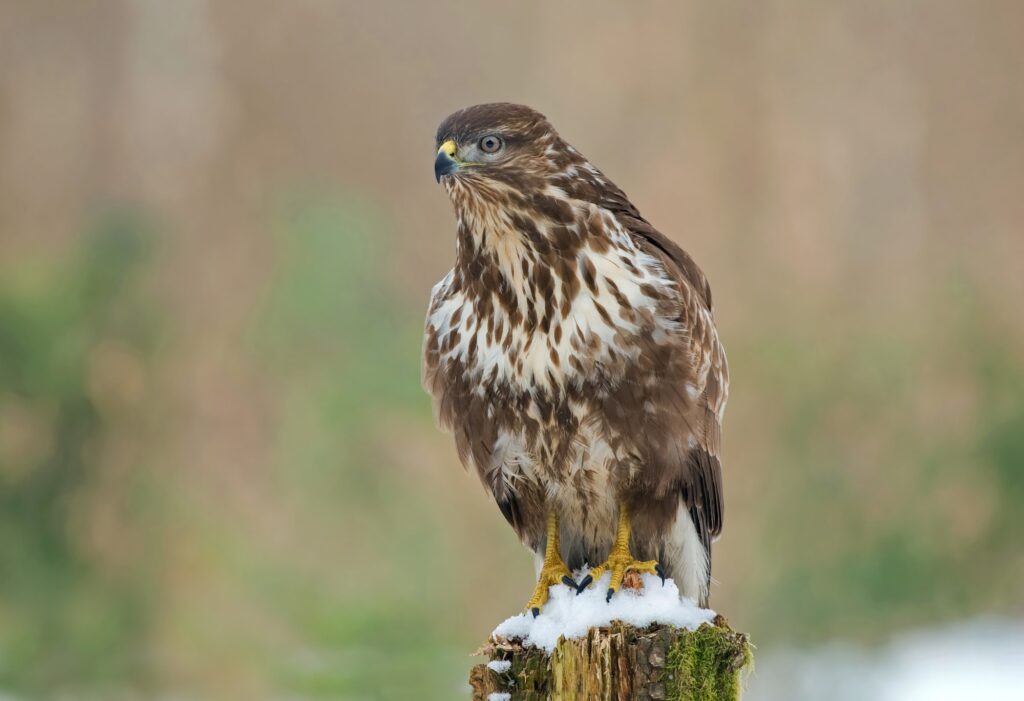Mass tobacco production isn’t the only thing Virginia is known for. Visitors to the state also love its unique collection of raptors, soaring across its sky all year long.
Thanks to the 62 percent of the state that’s covered in forest lands, a lot of birds of prey have found their way to the state, including hawks, golden eagles, bald eagles, and peregrine falcons. Among all these species of birds that have claimed the state as their natural habitat, there are seven hawks in Virginia you don’t want to miss. Check them out here!
Cooper’s Hawk
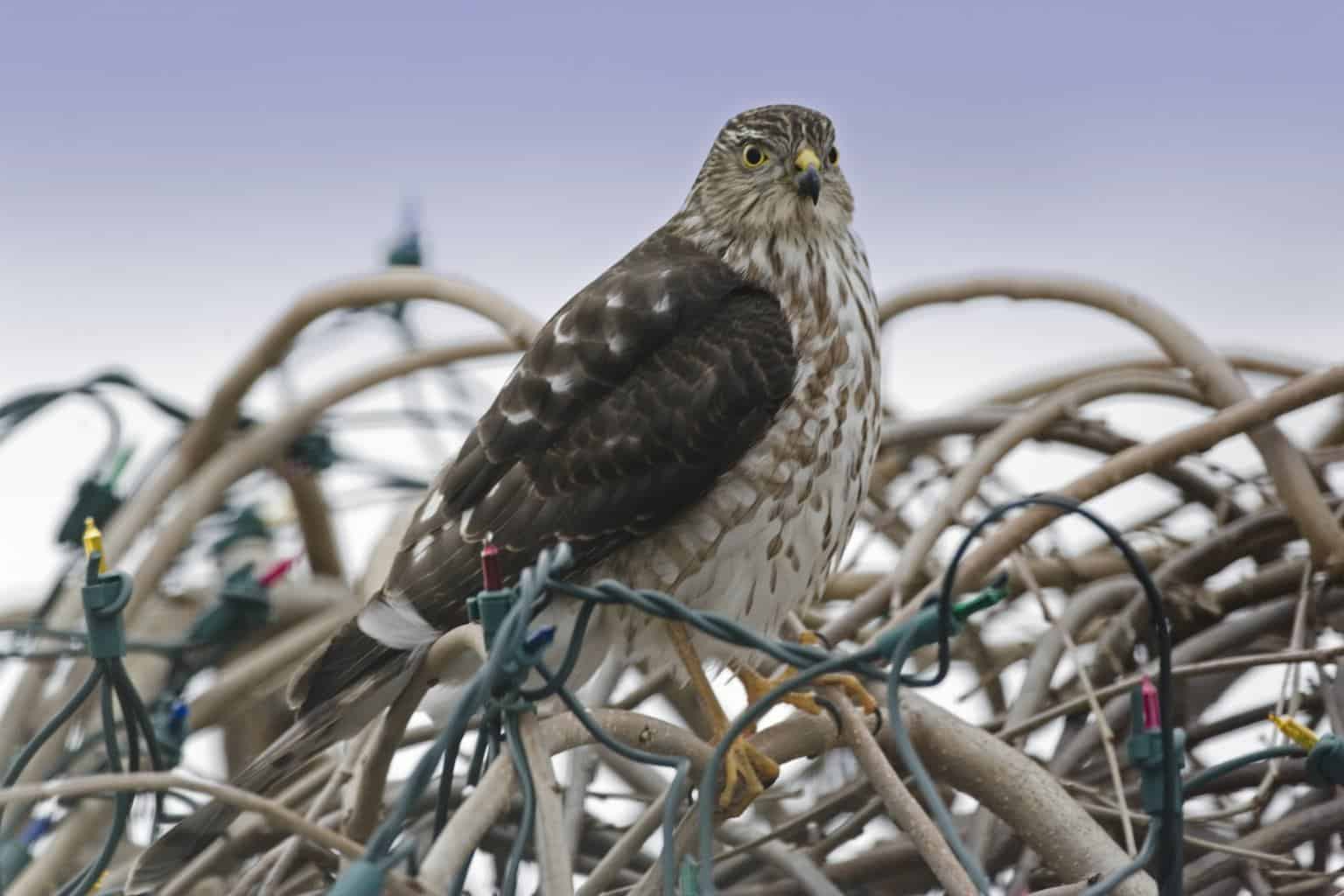
- Scientific Name: Accipiter cooperii
- Length: 14–16 inches
- Weight: 8–12 ounces
- Wingspan: 28–30 inches
Cooper’s hawks are notorious for their avid hunting skills. They prey on practically any bird they come across, including pigeons and small hawks.
These kinds of hawks and the sharp-shinned species have strikingly similar shapes. You’ll likely get confused at first glance, especially since they both fly in the same flapping-gliding motion. Your only chance at differentiating them is the larger size and wider wings of Cooper’s hawks.
Cooper’s hawks have long tails, which contribute to these raptors’ impeccable flying skills. They spend most of their time soaring over forests, chasing after smaller birds and rodents.
They are year-round hawks in Virginia who are known to occasionally visit backyard feeders while searching for songbirds to feed on. However, the most common place you’ll find them is on the edges of forests. Cooper’s birds prefer to avoid crowded areas. Despite that, they’re becoming more common in suburbs and urban areas because that’s where they can find a lot of birds to feed on. You may run across one of them while strolling casually down the street.
Sharp-Shinned Hawk
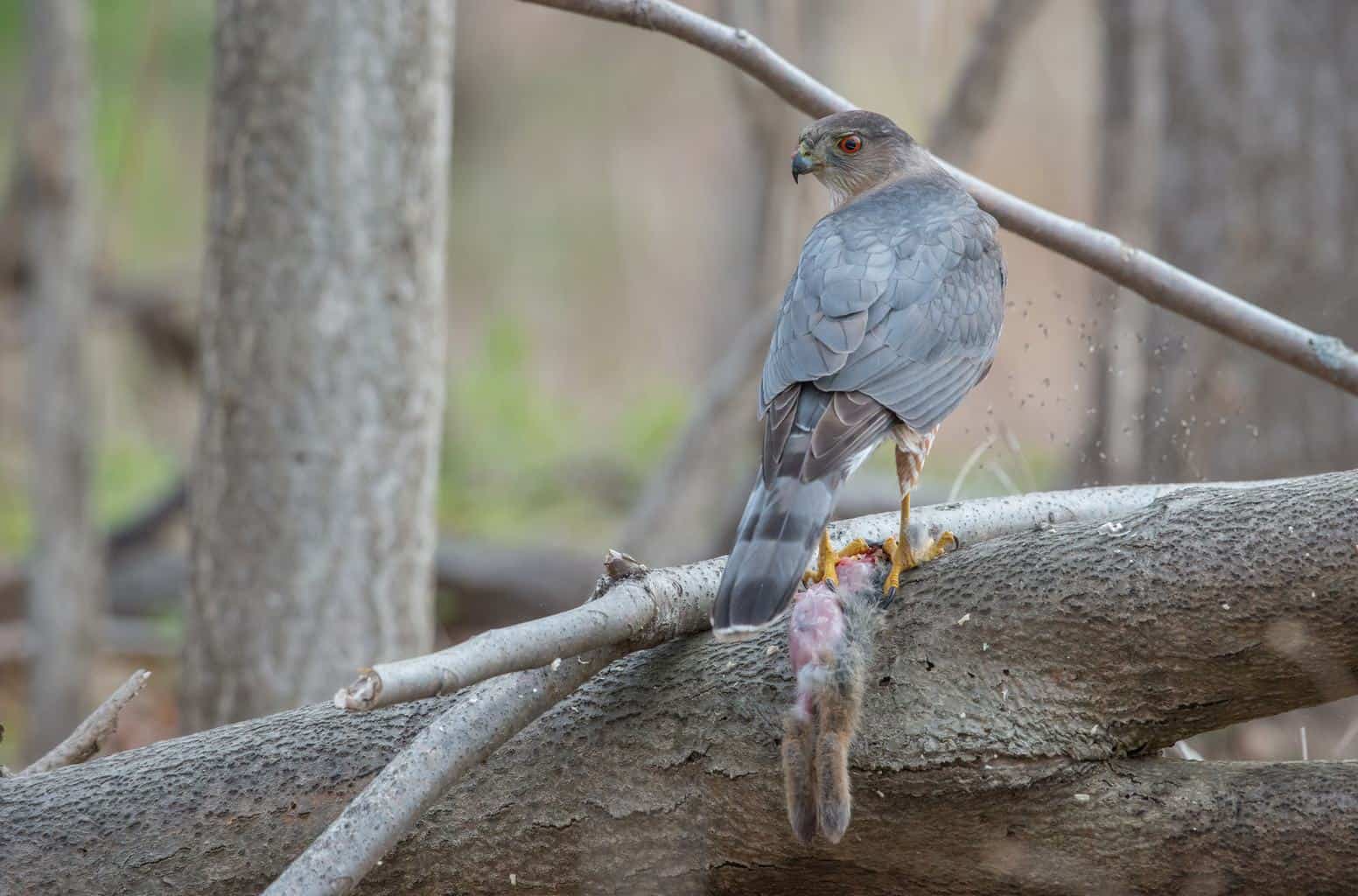
- Scientific Name: Accipiter striatus
- Length: 9.5–13.5 inches
- Weight: 3–7.7 ounces
- Wingspan: 17–22 inches
Sharp-shinned hawks are spread throughout the majority of Virginia when they’re not breeding. Some of them spend all the year in the state, while others migrate during the breeding season and return afterward.
In the southwestern side of the state, you can see sharp-shinned hawks all year round, but you have the best chance of catching them flying is during the fall. That’s when this species of hawk migrates south. If you watch the sky, you’re likely to see one or two of them. If you’re lucky enough, you can run across the whole flock.
When sharp-shinned hawks aren’t migrating, they spend their time in forests, nesting, feeding, and looking for prey. They sometimes move to open lands when they’re searching for food.
If you have a backyard feeder, a sharp-shinned hawk will probably pay you a visit, which isn’t necessarily a good thing. They’ll prey on any songbirds they find at the feeder. So, it’s recommended to remove the feeder for a couple of weeks until you’re sure they won’t return.
Northern Goshawk
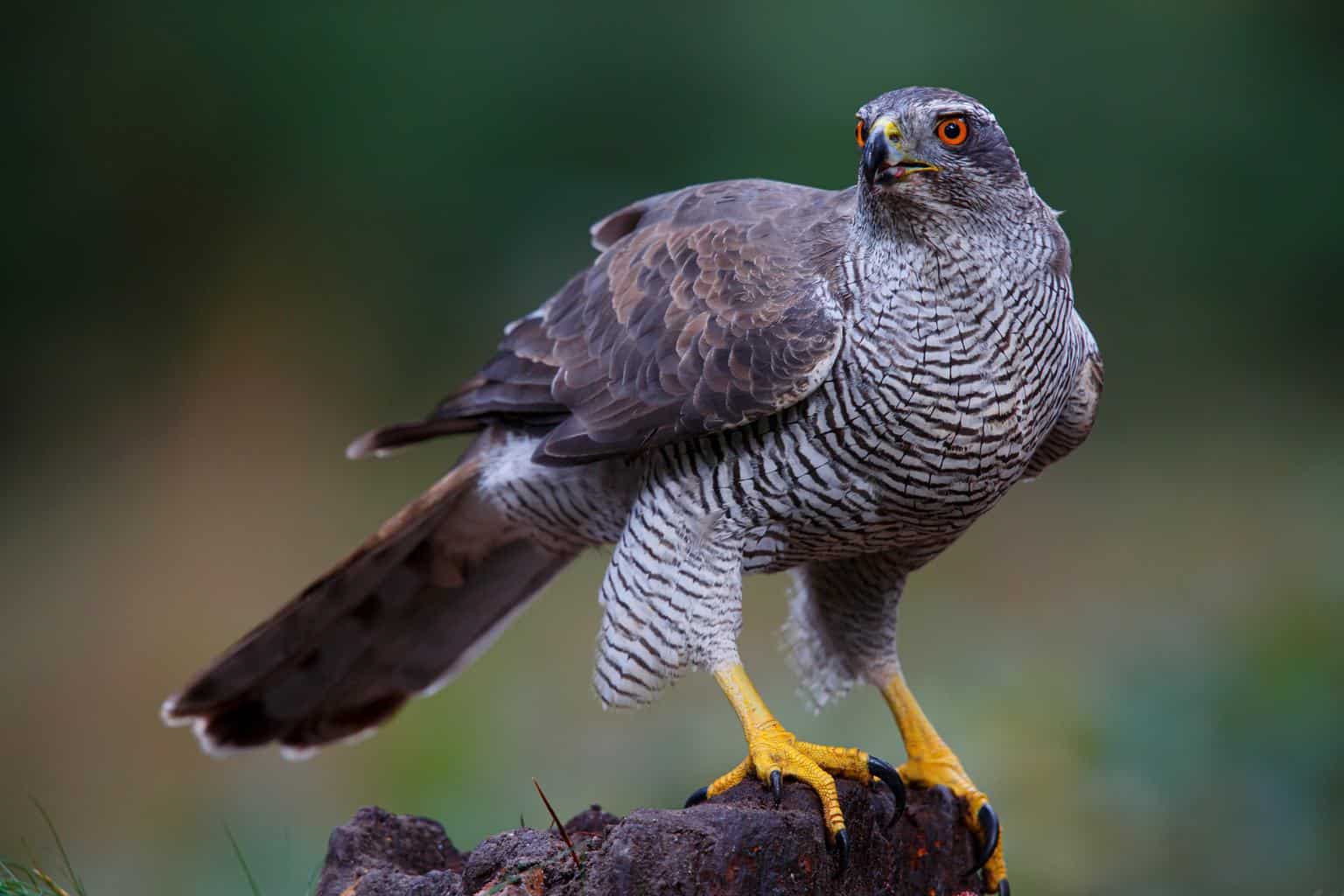
- Scientific Name: Accipiter gentilis
- Length: 20–23 inches
- Weight: 1.5–3 pounds
- Wingspan: 38–41 inches
Northern goshawks are among the hardest hawks to come across in many states, as they’re rather secretive birds. However, it’s particularly hard in Virginia because they only spend the winter there.
These hawks fall under the same classification as Cooper’s and sharp-shinned hawks, and they look a bit similar. That said, they’re more aggressive, and they have larger bodies that help them attack their prey.
Northern goshawks have grey bodies, red eyes, and white stripes above their eyes. The three features can help you easily identify them from a distance, especially their daring eyes. Moreover, the hawks have short wide wings, and their tails are long enough to help them chase after their prey in quick motions. Bear in mind that they may attack humans, too, if they feel threatened, so make sure to keep your distance.
The list of northern goshawk-preferred foods is long, including shrews, rabbits, chipmunks, geese, crows, and foxes. They also eat owls and kestrels, being one of the few prey birds that feed on other prey birds.
Red-Tailed Hawk
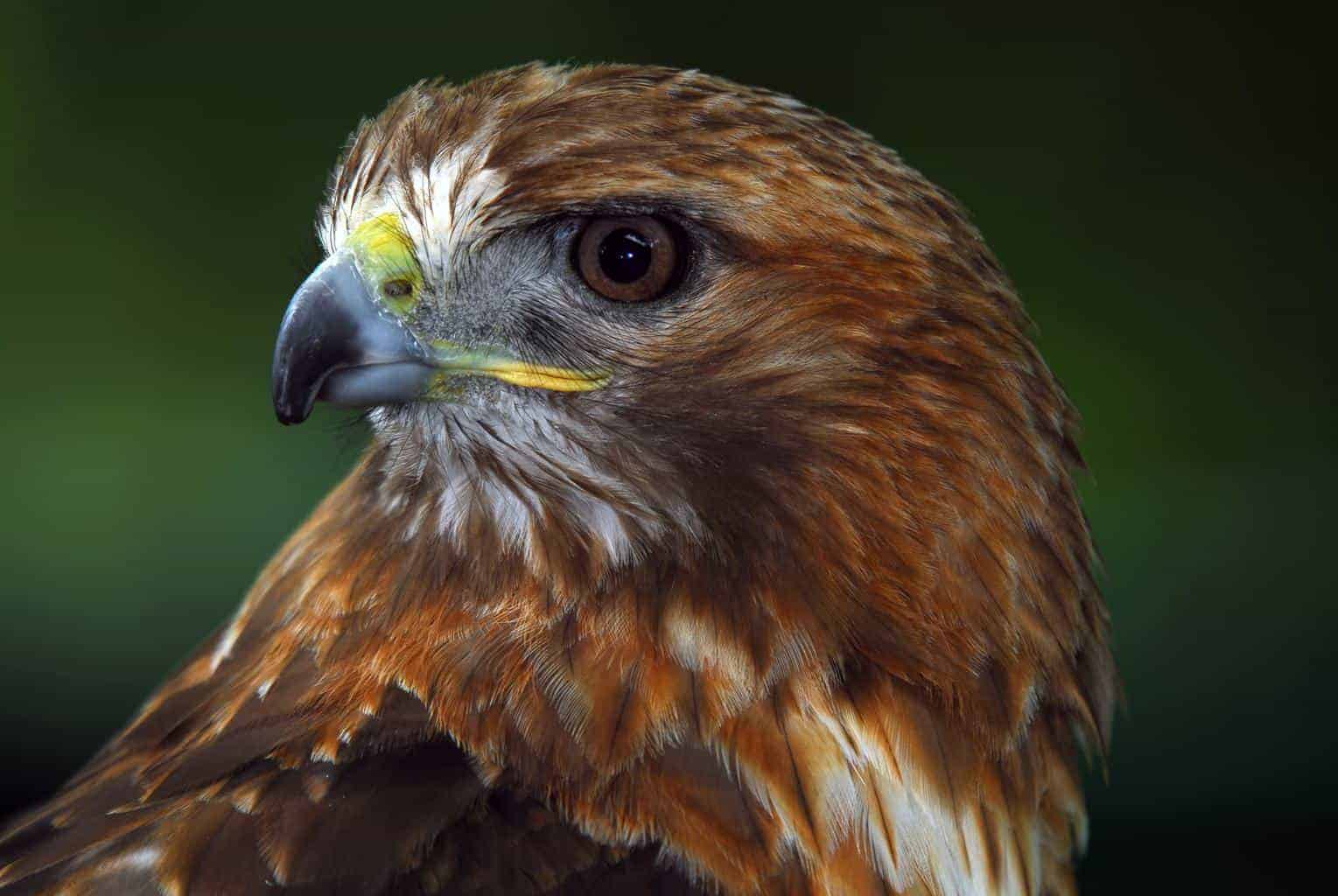
- Scientific Name: Buteo jamaicensis
- Length: 19–25 inches
- Weight: 1.75–3.5 pounds
- Wingspan: 48–53 inches
Anyone living in North America has probably run across red-tailed hawks before. They’re the most common hawks there, and they’re found in abundance across the United States. If you run across any hawk, check to see if it’s of the red-tailed species; it most likely is. They’re present in Virginia in huge numbers, which means you’ll inevitably see one of them.
These hawks stay in the state all year-round. They mostly spend their days perched on top of telephone poles — or any tall point, really — trying to catch sight of prey walking around. Pay attention while on your daily drive, and you’ll likely catch them. They love staying above to watch for prey walking on the ground, such as reptiles and such.
Red-tailed hawks have white undersides adorned by reddish-brown lines. Their tails are red, true to their name, and like all buteo hawks, they’re also short, broad, and rounded.
Do you know that iconic screech you hear in movies when they want to imply the presence of a hawk? That’s the red-tailed hawk. Its screech sounds too unique that it became the official sound to use in Hollywood movies and TV shows.
Red-Shouldered Hawk
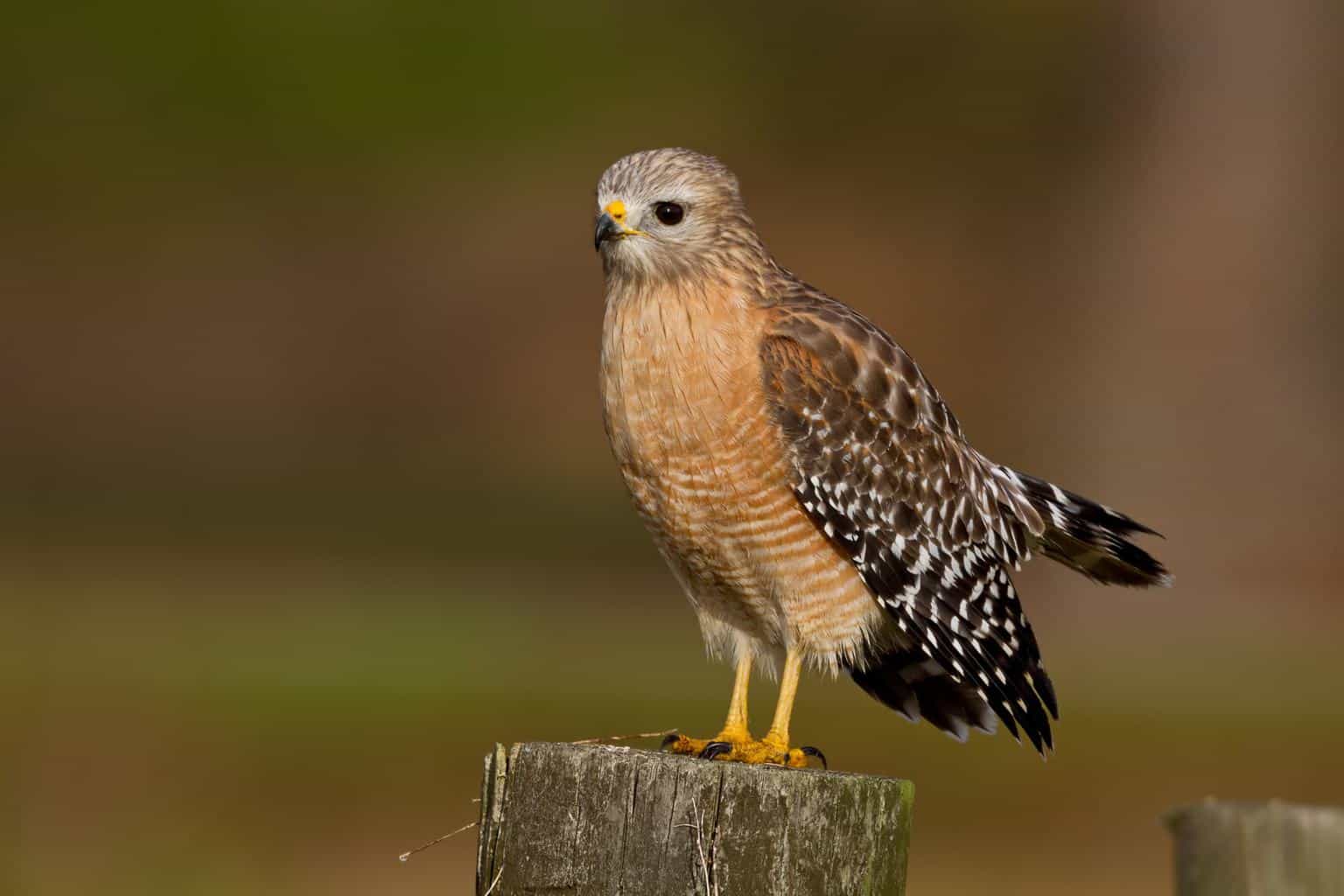
- Scientific Name: Buteo lineatus
- Length: 17–24 inches
- Weight: 17–27.3 ounces
- Wingspan: 37–43.5 inches
Red-shouldered hawks stay true to their name, donning reddish shoulders and white tails. They’re fairly colorful, making them easy to identify once you familiarize yourself with their shape. There are translucent crescents on the wingtips of red-shouldered hawks that become visible when they’re flying, which is another identification feature you can use.
The red-shouldered hawks that spend the whole year in Virginia live in the state’s wet forests; their most common places of residence are around creeks and streams. You may occasionally find one perched on top of a tree, where it’s likely waiting to make itself visible to its prey.
If there are crows around, red-shouldered hawks get pretty agitated. These species don’t get along well and often steal food from each other; you’d be lucky to run across such a fight.
It’s hard to feed red-shouldered hawks at bird feeders since they mostly only feed on birds, amphibians, small mammals, and reptiles. However, they may chase after the songbirds in your backyard. If you catch sight of them, take the feeder down for a few weeks — there won’t be any bird casualties on your watch!
Rough-Legged Hawk
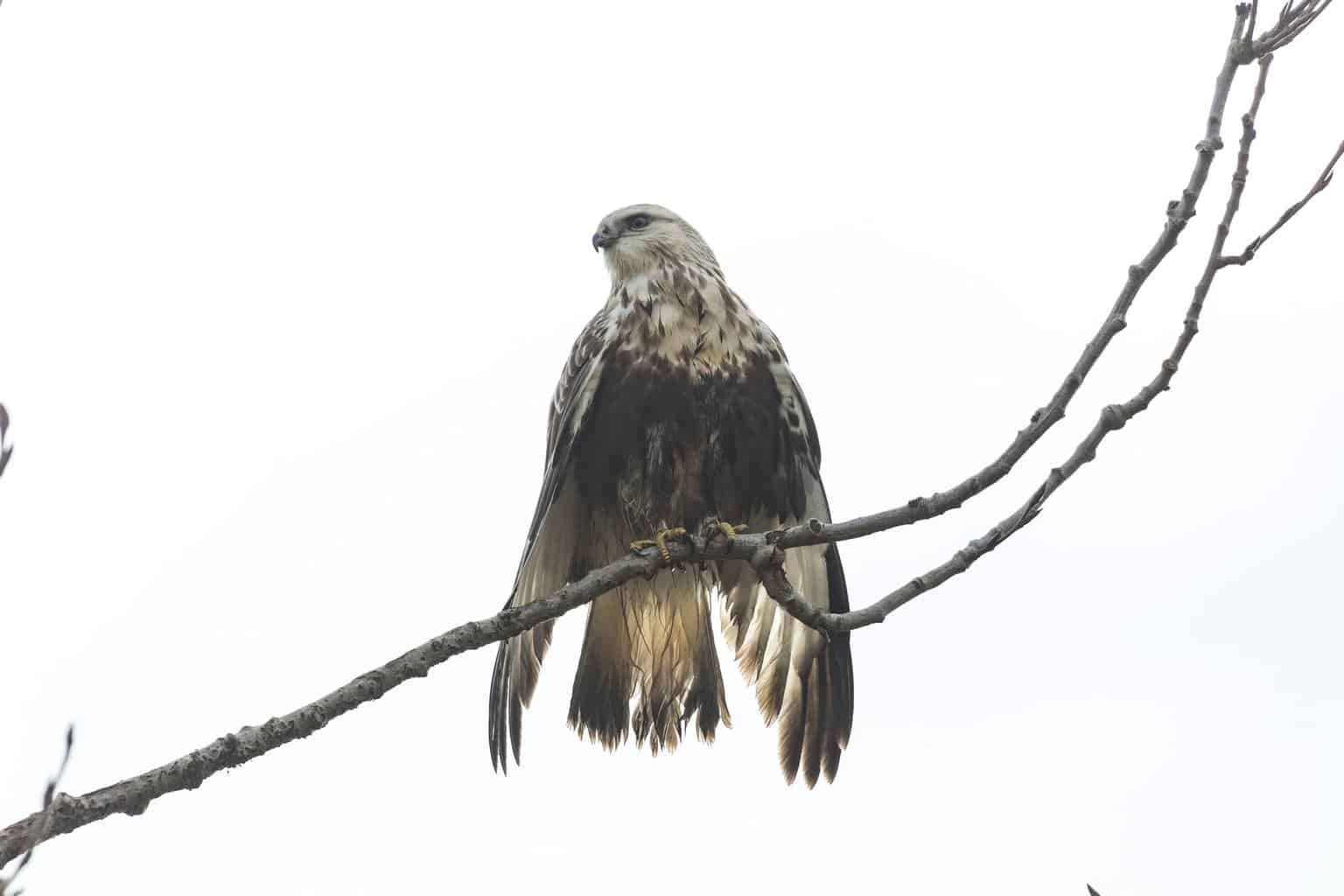
- Scientific Name: Buteo lagopus
- Length: 19–22 inches
- Weight: 2.25–3 pounds
- Wingspan: 48–56 inches
Rough-legged hawks were named for the feathers that cover their entire bodies, running down their legs to their sharp talons. While that trait may make them look a bit creepy, it helps birdwatchers easily identify these types of hawks since only three North American raptors boast this physical characteristic. Plus, it keeps them warm while they’re breeding in the frigid temperatures of the far north.
It’s relatively hard to come across rough-legged hawks in Virginia because they only spend the winter there, and that’s when they’re not breeding. When summer comes around, the hawks migrate to the arctic tundra, where they hunt, lay eggs, and migrate back when it becomes too cold for their young. They don’t only migrate to Virginia, though; they spread throughout Idaho, Iowa, and some other U.S. states as well.
These hawks look a bit similar to red-tailed hawks since they share the same buteo traits. Their wings are long and narrow and help them hover over the ground while looking for prey. Rough-legged buzzards have mostly dark bodies, but some variations may have light morphs. You may confuse them with ferruginous hawks because they also boast fully-feathered legs. You can easily tell them apart, however, by the dark tip on the rough-legged species’ tail.
Broad-Winged Hawk
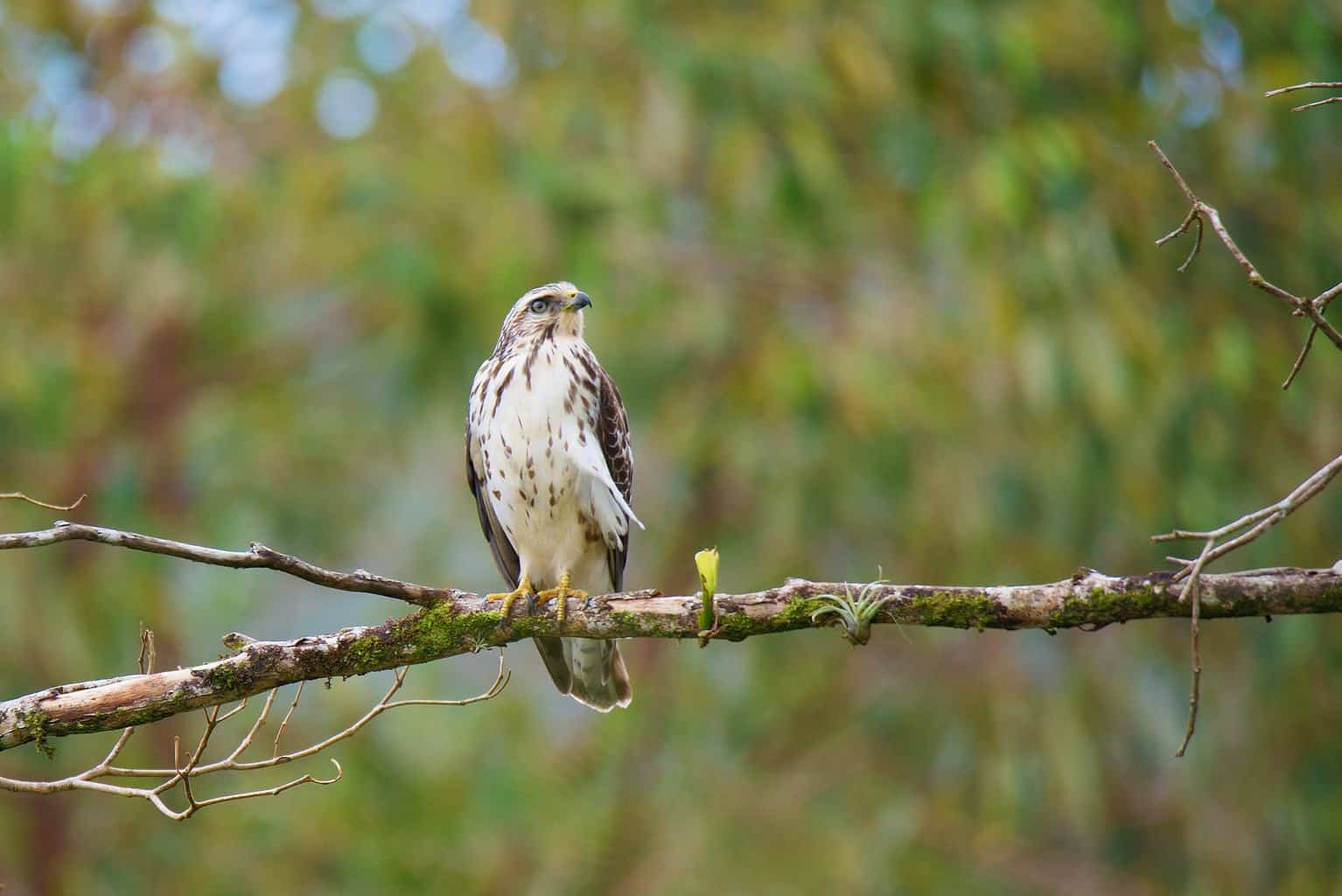
- Scientific Name: Buteo platypterus
- Length: 13.5–17.4 inches
- Weight: 9.3–20 ounces
- Wingspan: 32–39.5 inches
Broad-winged hawks only spend their breeding season in Virginia, which runs from April to August or early September. During migration, they travel in huge flocks of thousands across South America. If you’re lucky, you may catch sight of these raptors during their long trip.
These hawks are smaller than your average bird of prey. Their bodies are a bit stocky, too, and they have red heads and shoulders, making them a bit similar to red-shouldered hawks. However, their brown rather than red coloration may help you recognize them.
There’s also a bold white banding on every broad-winged hawk’s tail, and their tails are shorter than most hawks.
Final Thoughts
Virginia hosts a nice variety of hawks, and if you haven’t seen one before, a visit to this state will give you plenty of opportunity for a few hawk sightings. Plus, the different species of these raptors that are present here showcase traits you may not see anywhere else.
Looking for hawks is a fun task; the thrill of hearing the iconic raptor screech you’ve been longing for is unmatchable! We hope you have fun in your birdwatching endeavors!

